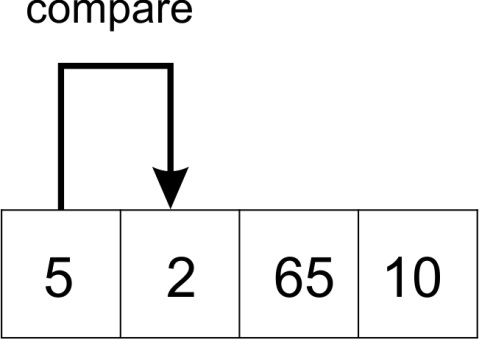Another popular sorting algorithm is the selection sort. This sorting algorithm is simple to understand, yet also inefficient, with its worst and best asymptotic values being O(n2). It begins by finding the smallest element in an array and interchanging it with data at, for instance, array index [0]. The same operation is done a second time; however, the smallest element in the remainder of the list after finding the first smallest element is interchanged with the data at index [1].
In a bid to throw more light on how the algorithm works, lets sort a list of numbers:

Starting at index 0, we search for the smallest item in the list that exists between index 1 and the index of the last element. When this element has been found, it is exchanged with the data found at index 0. We simply repeat this process until the list becomes sorted.
Searching for the smallest item within the list is an incremental process:

A comparison of elements 2 and 5 selects 2 as the lesser of the two. The...



